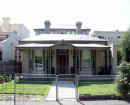GREYSTONES
565 GLENMORE ROAD ROWSLEY, MOORABOOL SHIRE
-
Add to tour
You must log in to do that.
-
Share
-
Shortlist place
You must log in to do that.
- Download report
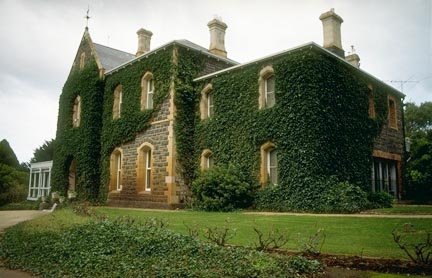

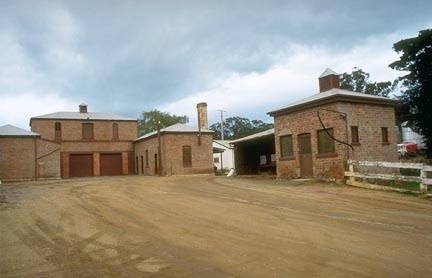
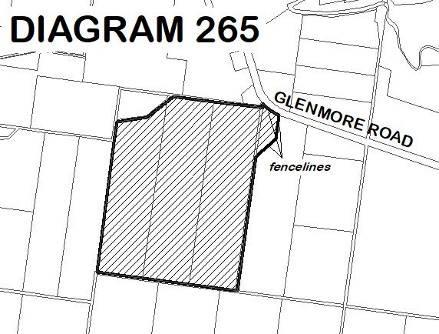
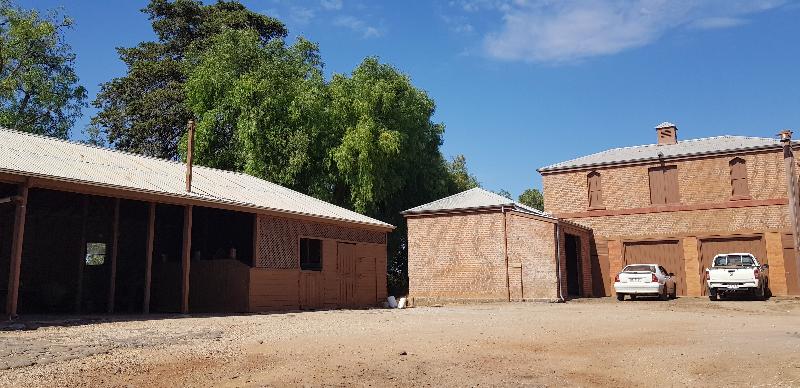


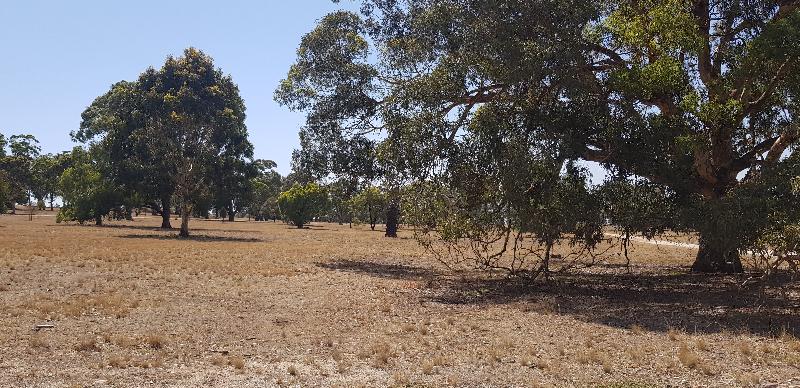
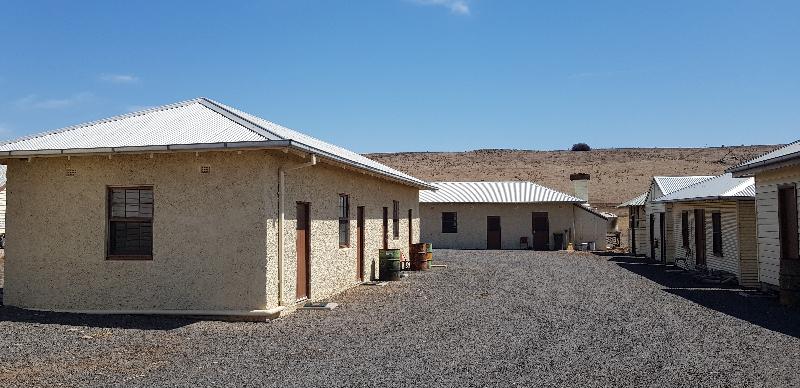
Statement of Significance
WHAT IS SIGNIFICANT?
Greystones including the interiors and exteriors of the homestead and other nineteenth-century buildings, homestead garden, parkland setting and other landscape elements. Staff houses constructed in the second half of the twentieth century are not of primary cultural heritage significance. Modern sheds and agricultural buildings, metal water tanks and the tennis court are not significant.
HOW IS IT SIGNIFICANT?
Greystones is of historical and architectural significance to the State of Victoria. It satisfies the following criterion for inclusion in the Victorian Heritage Register:
Criterion A
Importance to the course, or pattern, of Victoria's cultural history.
Criterion D
Importance in demonstrating the principal characteristics of a class of cultural places and objects.
Criterion H
Special association with the life or works of a person, or group of persons, of importance in Victoria's history.
WHY IS IT SIGNIFICANT?
Greystones is significant at the State level for the following reasons:
Greystones is historically significant as a substantial and largely intact pastoral property with a clear association with the development of nineteenth-century pastoral runs. The homestead, garden and parkland setting reflect the wealth, taste and lifestyle of pastoralists in Victoria in the late nineteenth century. The many intact outbuildings, designed and built to perform specific agricultural functions, clearly articulate the various activities required in the operation of a large pastoral property in the nineteenth and twentieth century. [Criterion A]
Greystones is architecturally significant for its fine and notable example of a large pastoral homestead and related outbuildings. Its homestead retains a large number of characteristics typical of pastoral properties in the Western District of Victoria, including homestead of fine Gothic design set in extensive garden. An array of nineteenth-century outbuildings associated with both the homestead and the agricultural life of the property are intact. The homestead is an important domestic work by the Melbourne architects Lloyd Tayler and Frederick Wyatt and demonstrates high quality workmanship in local stone. Its extensive homestead garden retains its late nineteenth-century layout and planting character, including kitchen garden, terraces, rockeries and collection of conifers. [Criterion D]
Greystones is significant for its association with notable pastoralists Charles Griffith and Molesworth Greene, and with business leader Sir William Angliss. Griffith and Greene developed Glenmore and Greystones stations from the 1840s and were influential in the development of pastoralism in Victoria. Greene was noted for the improvements he brought to the practice of agriculture including in water conservation, cultivation of grasses and use of share-farming. Angliss was an influential pastoralist and businessman who pioneered frozen meat exporting in Australia and by the 1930s dominated the industry. Greystones is an important example of one of Angliss's pastoral stations. [Criterion H]
-
-
GREYSTONES - History
Squatters Charles Griffith and James Moore established the Glenmore run in 1840 during a period of rapid pastoral expansion and dispossession and displacement of Aboriginal people in the area around Bacchus Marsh. Moore sold his interest to Molesworth Greene, and Griffith and Greene were granted pre-emptive right for Glenmore in September 1852. In the 1870s, Greene subdivided Greystones from the larger Glenmore. In 1876 he commissioned architects Lloyd Tayler and Frederick Wyatt to design a bluestone residence. It was completed in the same year along with an array of associated buildings near the homestead (including the stables, coach house and meat house) and a shearing shed and shearers quarters further south. The productive volcanic soil supported a range of cropping and grazing. Greene ran cattle, horses and 11,000 sheep and the property was renowned for its good quality wool. Greene was noted as an innovator of farming methods and at Greystones he experimented with a range of agricultural techniques designed to improve production and viability. After Greene's death in 1916, the property passed to the ownership of his son W P Greene. Greystones was purchased by prominent pastoralist and businessman William Angliss in 1934 who re-joined the property with part of Glenmore. Angliss pioneered frozen meat export in Victoria and came to dominate the industry by the 1930s. While Angliss divested himself of other pastoral properties at this time he focussed attention on Greystones and introduced methods of mechanised agriculture to the property. Greystones has been owned by Angliss's granddaughter, noted arts patron and philanthropist Diana Gibson, since 1957 and remains a working agricultural property (2019).
Key References
'Country Homes: Greystones' (2 July 1892) The Australasian.
'Greystones: Bacchus Marsh' (29 May 1886) The Australasian.
'Picturesque Bacchus Marsh' (16 July 1897) The Argus.
Beever, E. A., 'Angliss, Sir William Charles', Australian Dictionary of Biography.
Hone, J. Ann, 'Greene, Molesworth Richard', Australian Dictionary of Biography.
Jean, Mandy, 'Review of the Victorian Heritage Registration of 'Greystones' supplied with Application.
Peterson, Richard & Catrice, Daniel (1995), Bacchus Marsh Heritage Study.
Woods, Carole, 'Griffith, Charles James', Australian Dictionary of Biography.GREYSTONES - Assessment Against Criteria
Criterion
WHAT IS SIGNIFICANT?
Greystones including the interiors and exteriors of the homestead and other nineteenth-century buildings, homestead garden, parkland setting and other landscape elements. Staff houses constructed in the second half of the twentieth century are not of primary cultural heritage significance. Modern sheds and agricultural buildings, metal water tanks and the tennis court are not significant.HOW IS IT SIGNIFICANT?
Greystones is of historical and architectural significance to the State of Victoria. It satisfies the following criterion for inclusion in the Victorian Heritage Register:Criterion A
Importance to the course, or pattern, of Victoria's cultural history.Criterion D
Importance in demonstrating the principal characteristics of a class of cultural places and objects.Criterion H
Special association with the life or works of a person, or group of persons, of importance in Victoria's history.WHY IS IT SIGNIFICANT?
Greystones is significant at the State level for the following reasons:Greystones is historically significant as a substantial and largely intact pastoral property with a clear association with the development of nineteenth-century pastoral runs. The homestead, garden and parkland setting reflect the wealth, taste and lifestyle of pastoralists in Victoria in the late nineteenth century. The many intact outbuildings, designed and built to perform specific agricultural functions, clearly articulate the various activities required in the operation of a large pastoral property in the nineteenth and twentieth century. [
Criterion A]
Greystones is architecturally significant for its fine and notable example of a large pastoral homestead and related outbuildings. Its homestead retains a large number of characteristics typical of pastoral properties in the Western District of Victoria, including homestead of fine Gothic design set in extensive garden. An array of nineteenth-century outbuildings associated with both the homestead and the agricultural life of the property are intact. The homestead is an important domestic work by the Melbourne architects Lloyd Tayler and Frederick Wyatt and demonstrates high quality workmanship in local stone. Its extensive homestead garden retains its late nineteenth-century layout and planting character, including kitchen garden, terraces, rockeries and collection of conifers. [
Criterion D]
Greystones is significant for its association with notable pastoralists Charles Griffith and Molesworth Greene, and with business leader Sir William Angliss. Griffith and Greene developed Glenmore and Greystones stations from the 1840s and were influential in the development of pastoralism in Victoria. Greene was noted for the improvements he brought to the practice of agriculture including in water conservation, cultivation of grasses and use of share-farming. Angliss was an influential pastoralist and businessman who pioneered frozen meat exporting in Australia and by the 1930s dominated the industry. Greystones is an important example of one of Angliss's pastoral stations. [
Criterion H]
GREYSTONES - Permit Exemptions
General Exemptions:General exemptions apply to all places and objects included in the Victorian Heritage Register (VHR). General exemptions have been designed to allow everyday activities, maintenance and changes to your property, which don’t harm its cultural heritage significance, to proceed without the need to obtain approvals under the Heritage Act 2017.Places of worship: In some circumstances, you can alter a place of worship to accommodate religious practices without a permit, but you must notify the Executive Director of Heritage Victoria before you start the works or activities at least 20 business days before the works or activities are to commence.Subdivision/consolidation: Permit exemptions exist for some subdivisions and consolidations. If the subdivision or consolidation is in accordance with a planning permit granted under Part 4 of the Planning and Environment Act 1987 and the application for the planning permit was referred to the Executive Director of Heritage Victoria as a determining referral authority, a permit is not required.Specific exemptions may also apply to your registered place or object. If applicable, these are listed below. Specific exemptions are tailored to the conservation and management needs of an individual registered place or object and set out works and activities that are exempt from the requirements of a permit. Specific exemptions prevail if they conflict with general exemptions. Find out more about heritage permit exemptions here.Specific Exemptions:It should be noted that Permit Exemptions can be granted at the time of registration (under s.38 of the Heritage Act). Permit Exemptions can also be applied for and granted after registration (under s.92 of the Heritage Act).
General Condition 1
All exempted alterations are to be planned and carried out in a manner which prevents damage to the fabric of the registered place or object.
General Condition 2
Should it become apparent during further inspection or the carrying out of works that original or previously hidden or inaccessible details of the place or object are revealed which relate to the significance of the place or object, then the exemption covering such works shall cease and Heritage Victoria shall be notified as soon as possible.
General Condition 3
All works should ideally be informed by Conservation Management Plans prepared for the place. The Executive Director is not bound by any Conservation Management Plan and permits must still be obtained for works suggested in any Conservation Management Plan.
General Condition 4
Nothing in this determination prevents the Heritage Council from amending or rescinding all or any of the permit exemptions.
General Condition 5
Nothing in this determination exempts owners or their agents from the responsibility to seek relevant planning or building permits from the relevant responsible authority, where applicable.
Under s.38 of the Heritage Act 2017 the Executive Director may include in his recommendation categories of works or activities which may be carried out in relation to the place or object without the need for a permit under Part 5 of the Act. The Executive Director must not make a recommendation for any categories of works or activities if he considers that the works or activities may harm the cultural heritage significance of the place or object. The following permit exemptions are not considered to cause harm to the cultural heritage significance of Greystones.Specific Permit Exemptions
Exteriors, nineteenth-century buildings
.Minor patching, repair and maintenance which replaces like with like. Repairs must maximise protection and retention of significant fabric and include the conservation of existing details or elements. Any new materials used for repair must not exacerbate the decay of significant fabric due to chemical incompatibility, obscure significant fabric or limit access to significant fabric for future maintenance.
.Removal of items such as wiring, antennae, aerials etc and making good in a manner not detrimental to the fabric.
.All works required to maintain, secure and make safe buildings and structures including the removal of broken glass, the temporary shuttering of windows and covering of holes as long as this work is reversible and does not have a detrimental impact on significant fabric.
.Installation of new external fixtures and fittings such as hot water services and taps in a manner that does not harm the cultural heritage significance of the place.Interiors, nineteenth-century buildings
.Painting of previously painted walls and ceilings provided that preparation or painting does not remove evidence of the earlier paint or decorative schemes. No previously varnished or oiled timber surfaces are to be painted.
.Removal of paint from originally unpainted or oiled surfaces including ceilings, joinery, doors, architraves and skirtings by non-abrasive methods.
.Installation, removal or replacement of carpets and/or flexible floor coverings, window dressings, and devices for mounting artworks.
.Installation, removal or replacement of electrical and IT wiring provided that such works do not require chasing or cutting into significant fabric and providing that any early light switches, pull cords, push buttons or power outlets are retained in-situ.
.Installation, removal or replacement of smoke and fire detectors, alarms and the like, in existing locations.
.Installation, removal or replacement of ducted, hydronic or concealed radiant type heating provided that the installation does not damage significant fabric, and provided that the central plant is concealed, and that the work is done in a manner which does not harm significant fabric.
.Installation of plant within the roof space, providing that it does not impact on the external appearance of the building or involve structural changes.
.Installation, removal or replacement of bulk insulation in the roof space.
.Maintenance, replacement and installation of existing electrical and fire services where this does not harm the cultural heritage significance of the place.Staff residences
.All general maintenance, repairs and minor works to the exteriors.
.All internal works.
Homestead gardens and parkland
.The processes of gardening including mowing, pruning, mulching, bedding displays, removal of dead shrubs, planting and replanting of garden beds, disease and weed control, and maintenance to care for plants.
.Repairs and maintenance to hard landscape elements such as paths, paving, steps, rockeries and rock walls, gutters, drainage and irrigation systems, in a manner which preserves the cultural heritage significance of the place.
.Replanting of dead trees and vegetation with the same plant species.
.Repairs to drystone perimeter wall in a manner which does not damage the wall or harm the cultural heritage significance of the place.
.Regular management and maintenance of established trees including formative and remedial pruning, removal of deadwood, pest and disease control, cabling and similar supportive works provided that work is carried out by a qualified arborist.
.Emergency management and maintenance of dead or dangerous trees to maintain public safety and to protect buildings and structures. If it is necessary for a tree to be removed a report should be provided to the Executive Director of Heritage Victoria within 21 days of work commencing.
.Removal of plants listed as noxious weeds in the Catchment and Land Protection Act 1994.
.Vegetation protection and management of possums and vermin.Modern agricultural sheds, metal water tanks and tennis court
.All general maintenance, repairs, minor works or removal.
Agricultural activities
.All processes to allow for the continuation of existing agricultural practices including management of livestock, grazing, shearing, cultivation, cropping and other activities necessary for the usual agricultural operation of the place.
.Maintenance or repair of fences, gates, water tanks or similar structures necessary for the continuation of agricultural practices.
.The processes of management of agricultural landscape including slashing of grass and grading of established driveways and tracks.Fire suppression
.Fire suppression activities such as fuel reduction burns provided that they are done in a manner that is not detrimental to the cultural heritage significance of the place.Public and workplace safety and security
.Minor works to maintain workplace safety in functioning agricultural buildings providing the works do not harm the cultural heritage significance of the place.
.The erection of temporary security fencing, scaffolding, hoardings or surveillance systems to prevent unauthorised access or secure public safety providing works do not harm the cultural heritage significance of the place.
.Emergency stabilisation necessary to secure safety where a feature has been irreparably damaged or destabilised and represents a safety risk to its users or the public. Urgent or emergency site works are to be undertaken by an appropriately qualified specialist such as a structural engineer and reported to the Executive Director within 21 days of the completion of works.GREYSTONES - Permit Exemption Policy
Preamble
The purpose of this information is to assist owners when considering or making decisions regarding works to a registered place. It is recommended that any proposed works be discussed with an officer of Heritage Victoria prior to making a permit application. Discussing proposed works will assist in answering questions the owner may have and aid any decisions regarding works to the place.
The extent of registration of Greystones in the Victorian Heritage Register affects the whole place shown on Diagram 265 including the land, buildings (exteriors and interiors), driveways, trees, landscape elements and other features. Under the Heritage Act 2017 a person must not remove or demolish, damage or despoil, develop or alter or excavate, relocate or disturb the position of any part of a registered place or object without approval. It is acknowledged, however, that alterations and other works may be required to keep places and objects in good repair and adapt them for use into the future.
If a person wishes to undertake works or activities in relation to a registered place or registered object, they must apply to the Executive Director, Heritage Victoria for a permit. The purpose of a permit is to enable appropriate change to a place and to effectively manage adverse impacts on the cultural heritage significance of a place as a consequence of change. If an owner is uncertain whether a heritage permit is required, it is recommended that Heritage Victoria be contacted.
Permits are required for anything which alters the place or object, unless a permit exemption is granted. Permit exemptions usually cover routine maintenance and upkeep issues faced by owners as well as minor works or works to the elements of the place or object that are not significant. They may include appropriate works that are specified in a conservation management plan. Permit exemptions can be granted at the time of registration (under s.38 of the Heritage Act) or after registration (under s.92 of the Heritage Act). It should be noted that the addition of new buildings to the registered place, as well as alterations to the interior and exterior of existing buildings requires a permit, unless a specific permit exemption is granted.
Conservation management plans
It is recommended that a Conservation Management Plan is completed to guide future decision making about the registered place.
Aboriginal cultural heritage
If works are proposed which have the potential to disturb or have an impact on Aboriginal cultural heritage it is necessary to contact Aboriginal Victoria to ascertain any requirements under the Aboriginal Heritage Act 2006. If any Aboriginal cultural heritage is discovered or exposed at any time it is necessary to immediately contact Aboriginal Victoria to ascertain requirements under the Aboriginal Heritage Act 2006.
Other approvals
Please be aware that approval from other authorities (such as local government) may be required to undertake works.
Archaeology
Any works that may affect historical archaeological features, deposits or artefacts at the place is likely to require a permit, permit exemption or consent. Advice should be sought from the Archaeology Team at Heritage Victoria.
Cultural heritage significance
Overview of significance
The cultural heritage significance of Greystones lies in the fact it is a substantially intact pastoral property that relates to the growth and consolidation of grazing and the wool industry in Victoria. The homestead, gardens and their parkland surrounds express the prosperity and social status of wealthy pastoralists in the late nineteenth century. The numerous intact outbuildings from the same era describe the functioning of a large nineteenth-century pastoral property. The twentieth-century staff residences contribute to an understanding of the property's operation but are not of primary cultural heritage significance. Modern sheds and agricultural buildings, metal water tanks and tennis court are not significant.
-
-
-
-
-
GREYSTONES
 Victorian Heritage Register H0265
Victorian Heritage Register H0265
-
177 Fenwick Street
 Yarra City
Yarra City -
19 Cambridge Street
 Yarra City
Yarra City -
2 Derby Street
 Yarra City
Yarra City
-
-





